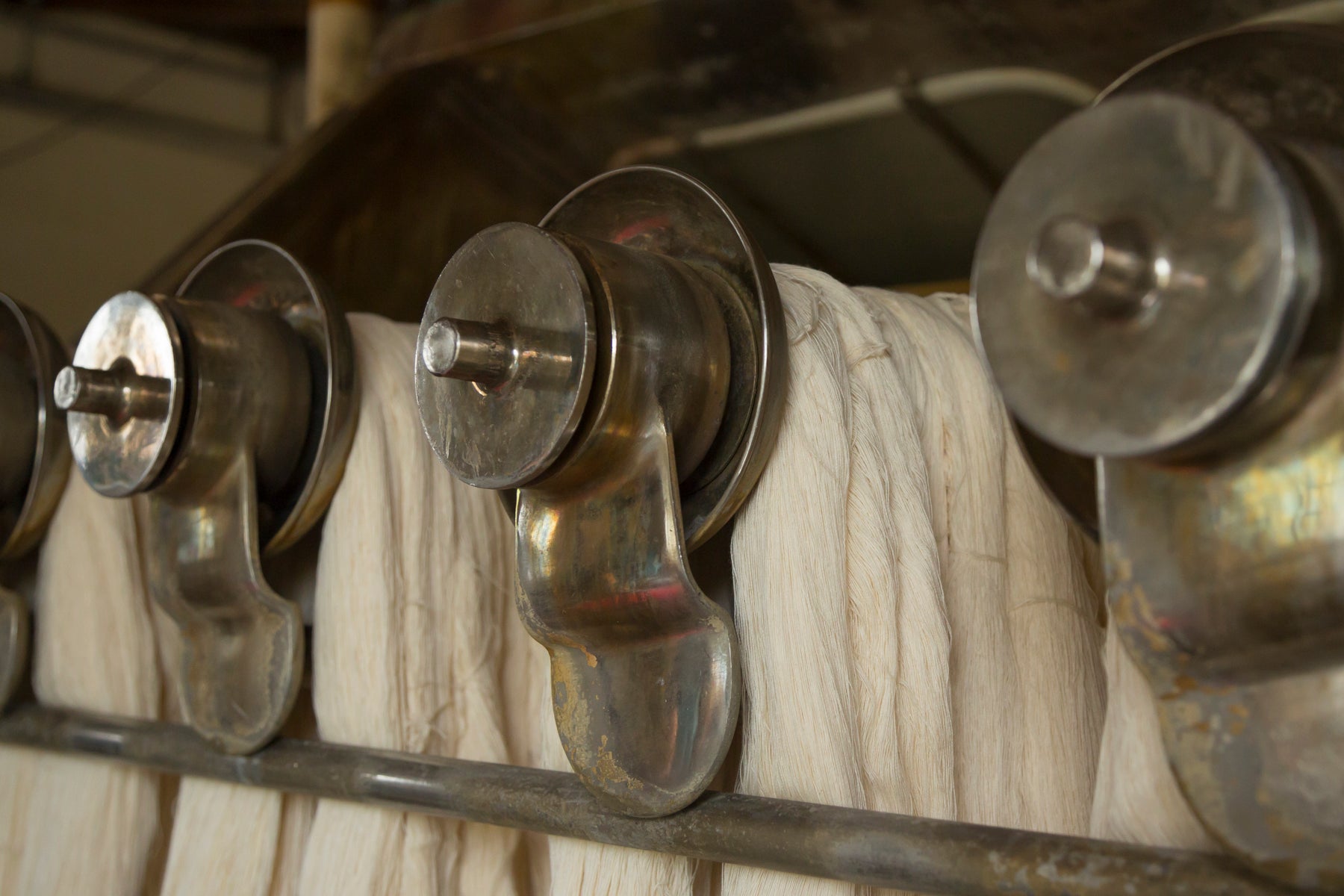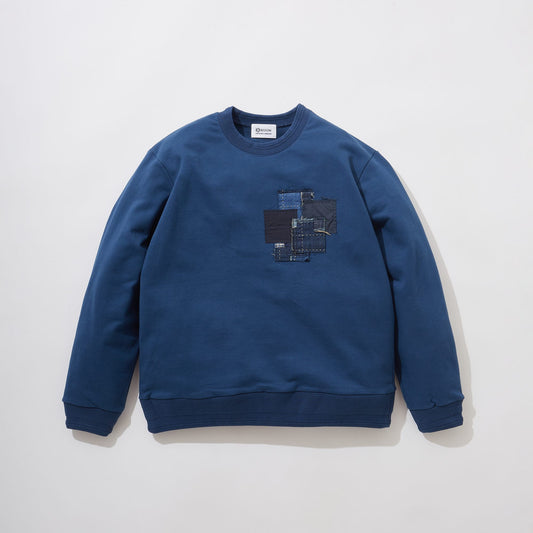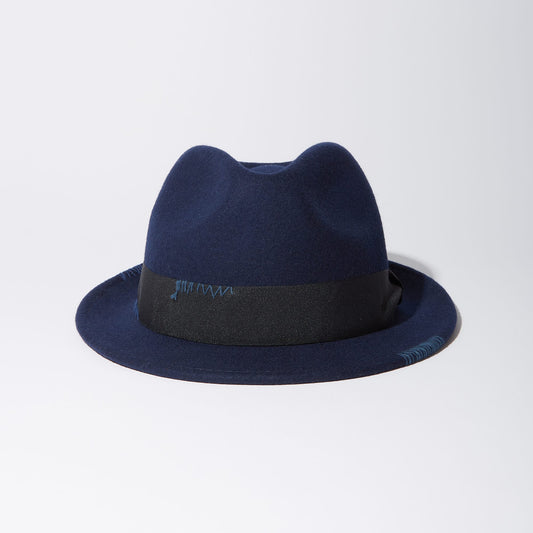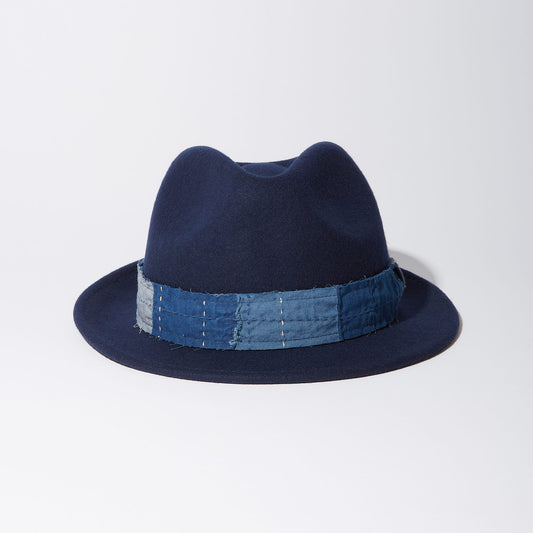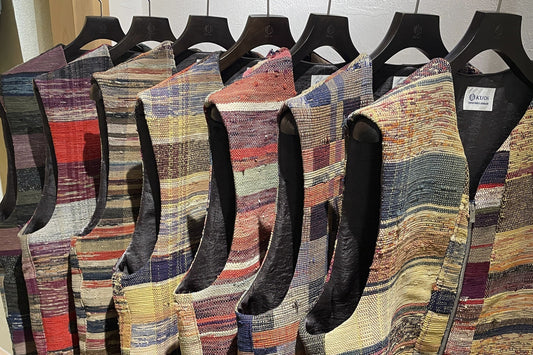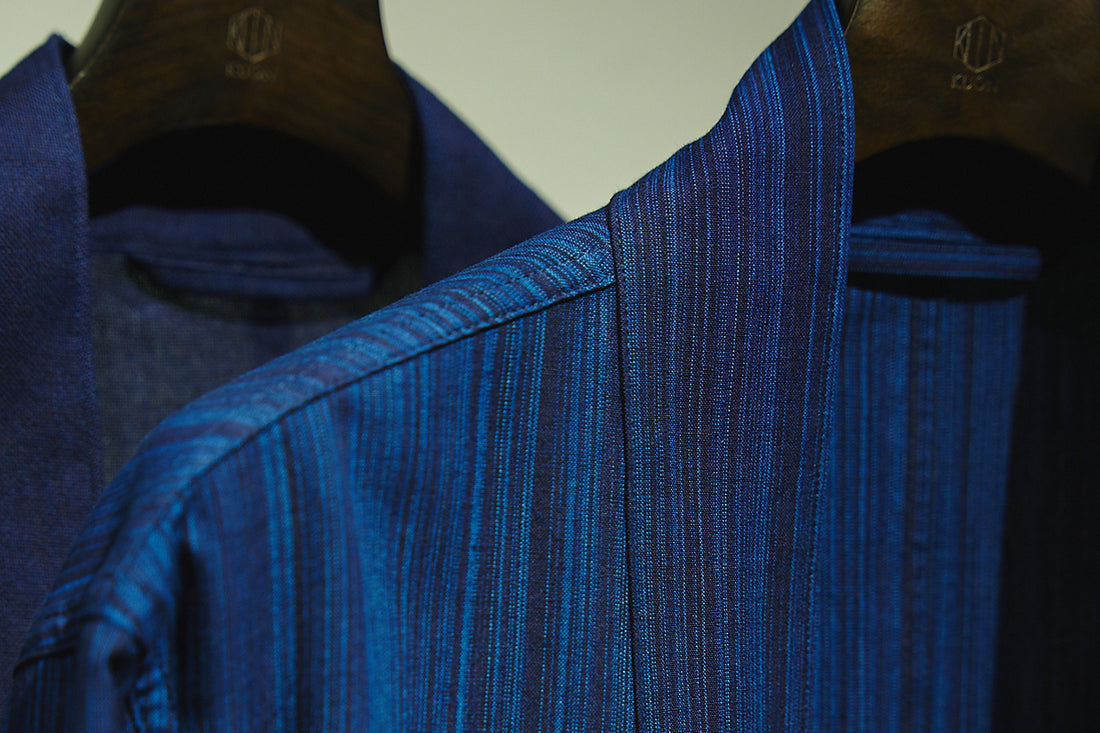
"Noragi" is back in stock
Share
Hi this is Shohei.
As you might know, the concept of the SS24 collection is related to "Matsuri", Japanese festivities. We have had conversations like "we want to have some kind of 'Haori' jacket if we go to Matsuri, Japanese festivals." As a result, this Noragi has been produced.
What's "KUON atelier"
Before introducing the product itself, I would like to write about "KUON atelier".
As KUON is a fashion brand, we create seasonal collections twice a year. Those collections are labeled with "KUON SHINICHIRO ISHIBASHI". On the other hand, "KUON atelier" is an experimental label to present appeals of KUON with approaches different from the collection label.
For example, the currently available collection, SS24 is created with a Japanese traditional concept "Hare and Ke".
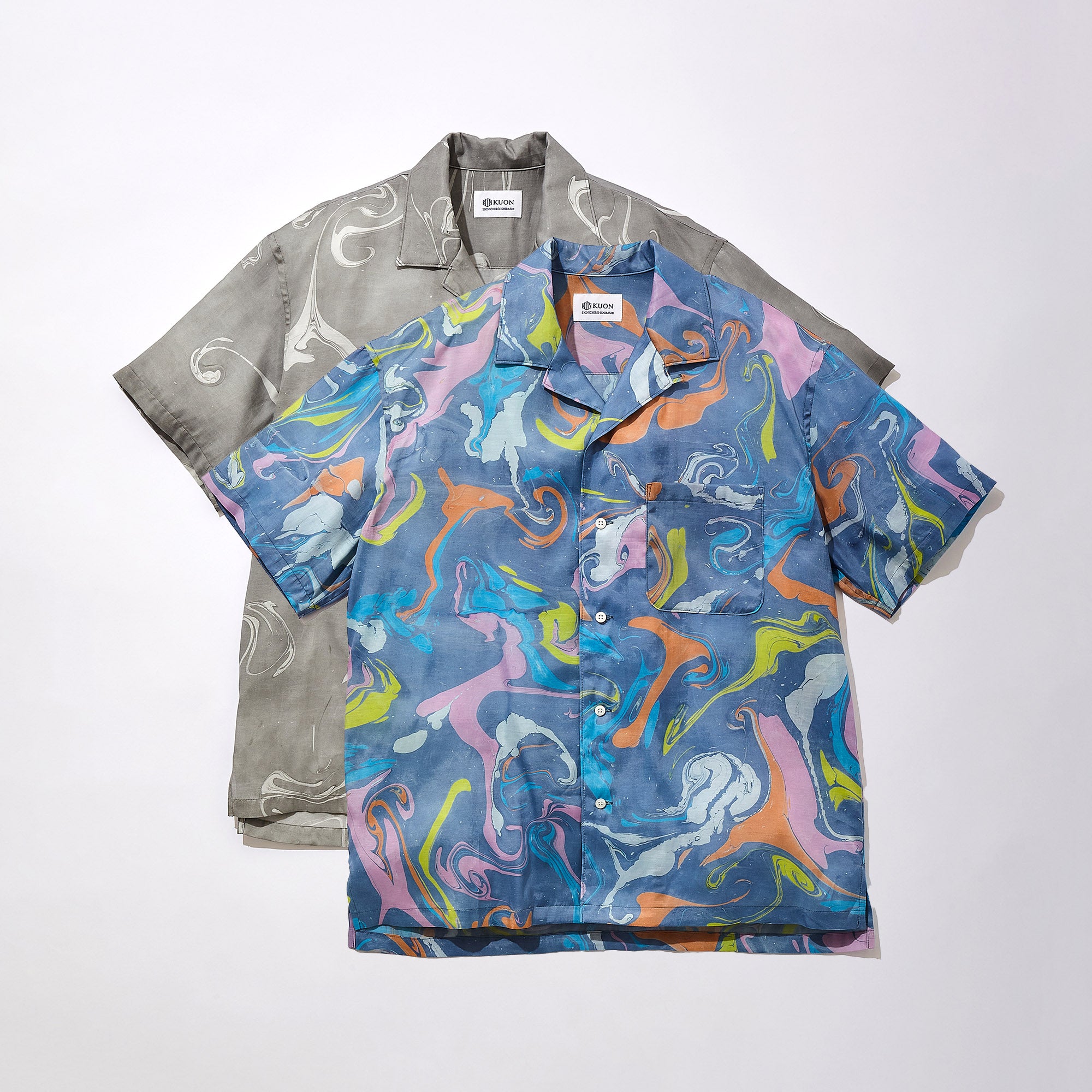
The above Suminagashi Camp Collar Shirt from the seasonal collection, SS24 shows its concept well. However, in the "KUON atelier" label creates products using leftover fabrics from the collections and products that the staff would like to wear now.
And the KUON atelier item introduced here is one that was born from a casual conversation in the atelier.
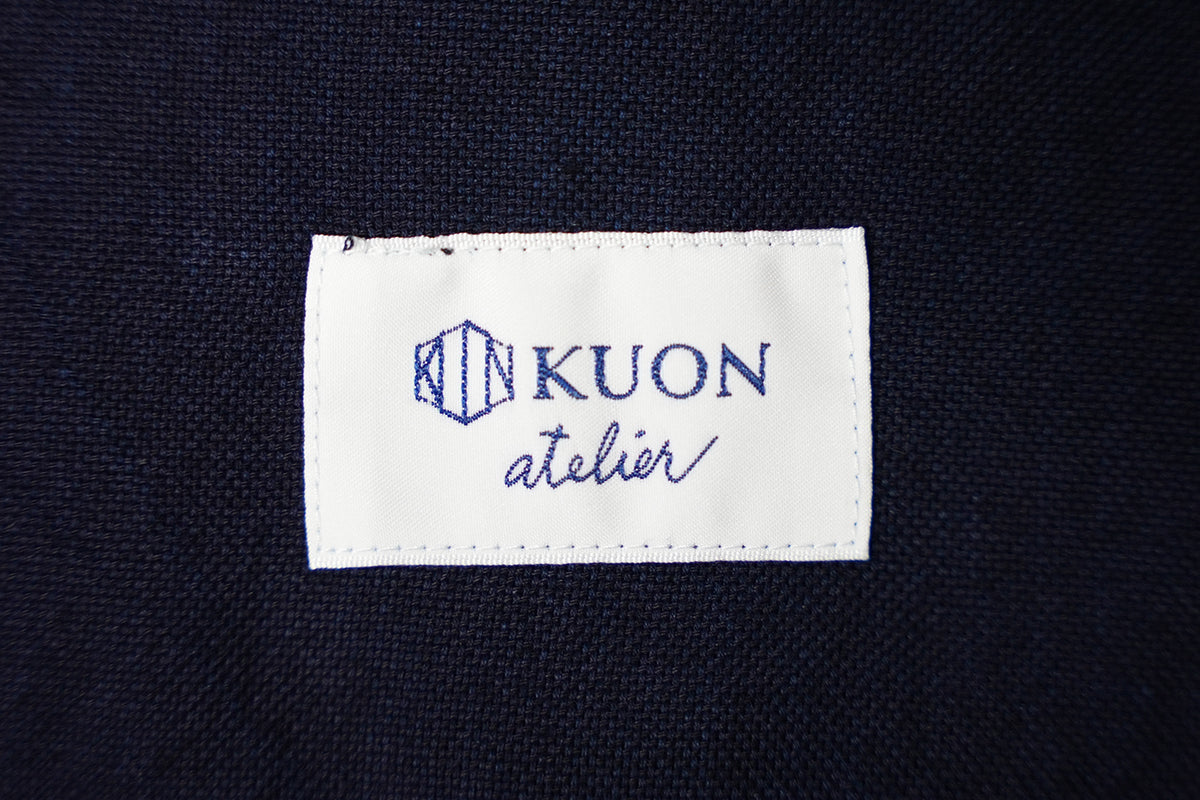
The word "atelier" in the woven label is created based on the designer's handwriting.
Then, let's move on to the product's introduction.
Aizome Noragi
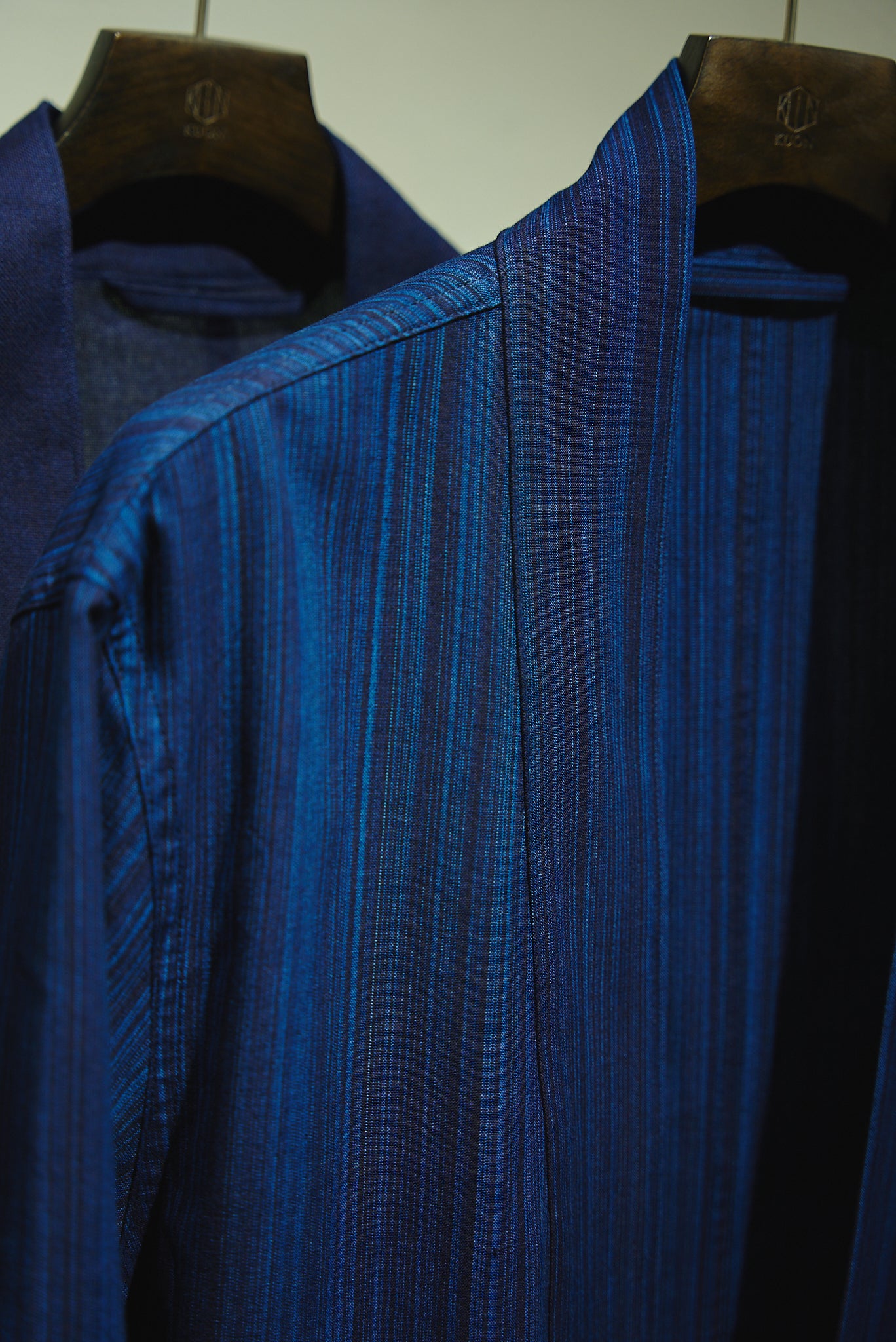
Introduced here are two types of indigo-dyed "Noragi", Japanese traditional workwear.
In the past, people engaged in farming wore Noragi when working in the fields.
Noragi was easy to wear, easy to move around in, protected against external injuries, protected against insects, protected against direct sunlight, etc., and prevented perspiration from steaming. It is an ancient Japanese workwear that has been thoughtfully simplified just to improve the functionality of field work.
Although it fell into disuse with the arrival of Western-style clothing in Japan in the Showa period (1926-1989), it is a traditional Japanese garment filled with the wisdom of the people of old.

The design is simplified as is typical of Noragi, but the designer's experience and skill in making clothes has given it a three-dimensional, modern update. The wide body and breathable construction of Noragi are retained, while the length is kept short and sleek, allowing the garment to be worn like a cardigan. Importantly, extended sleeve makes it more Western look.
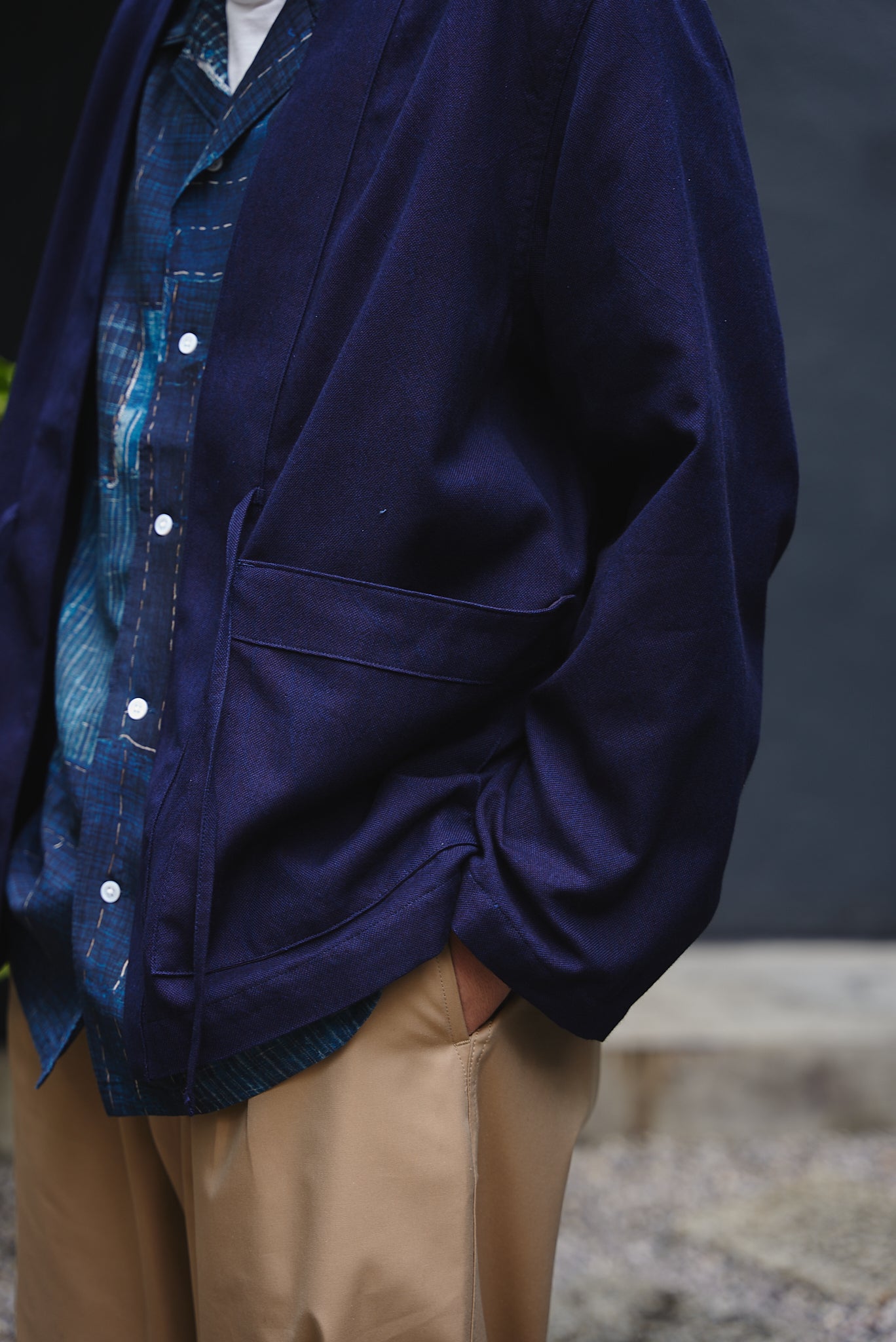
In other words, Japanese clothes tailored in a Western style.
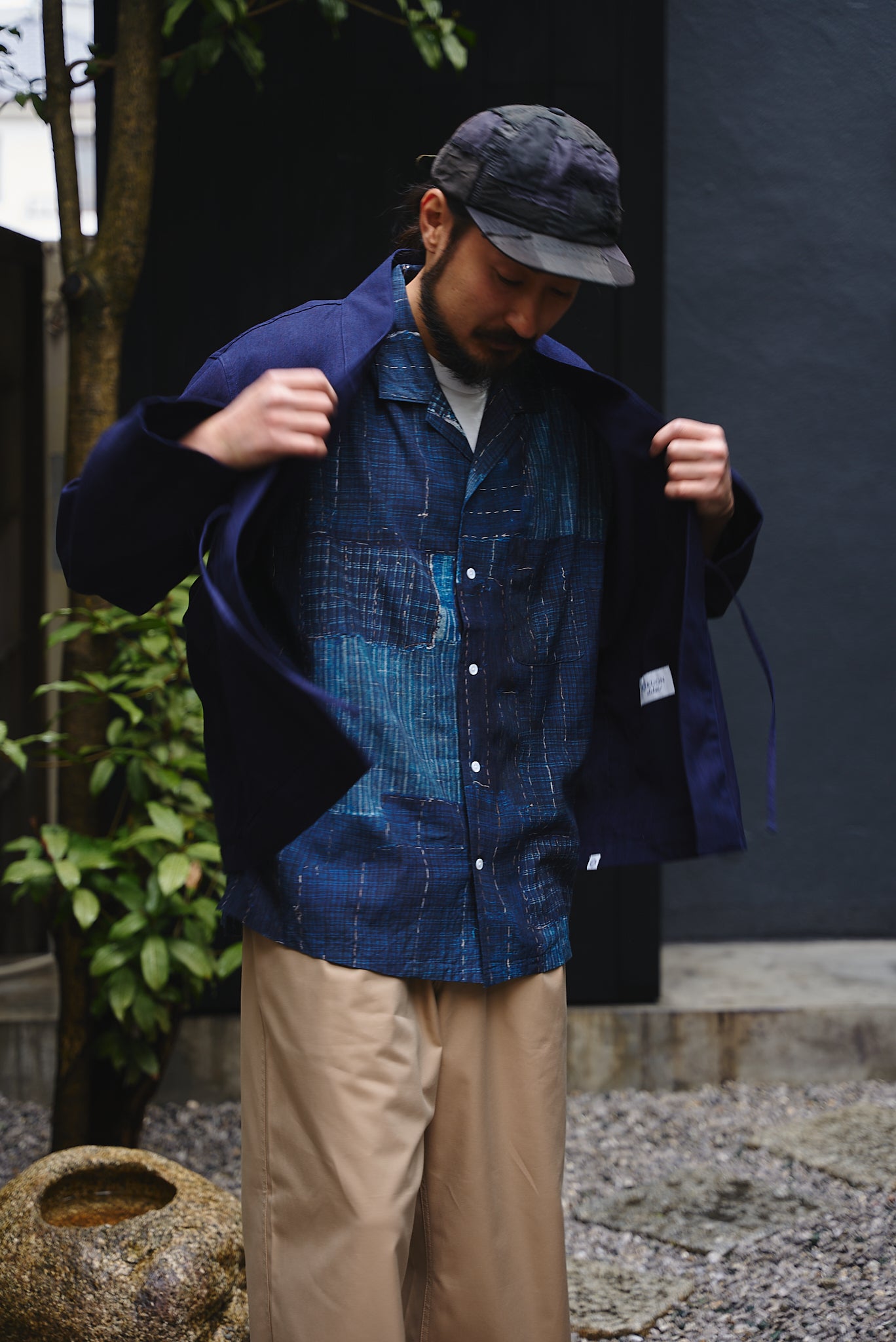

Of course, the functionalities mentioned above are retained.


The overall look and the collar follow the impression of kimono, but with the comfort of a familiar Western garment.
Aizome Kasuri Noragi
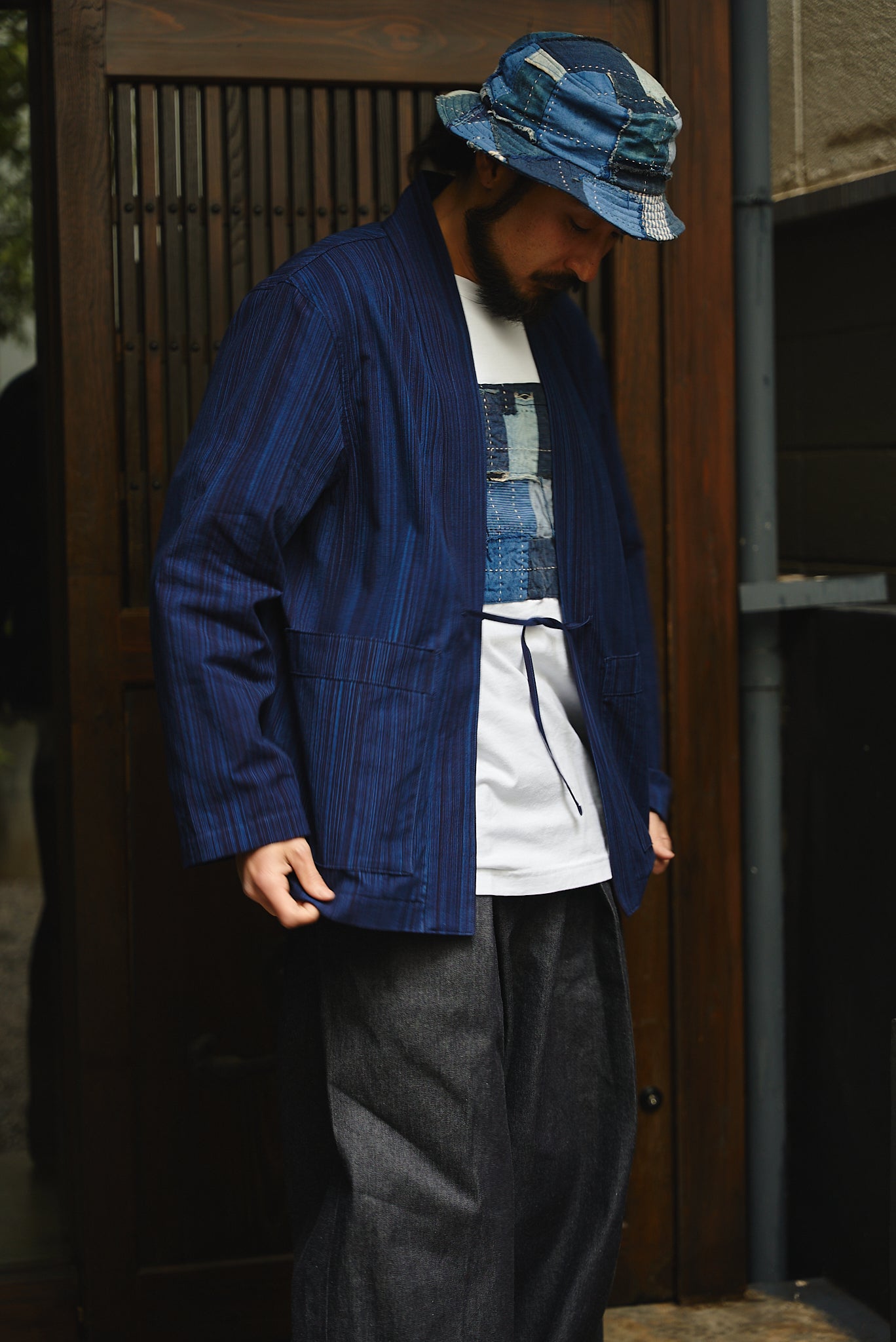
Unlike simple ox fabrics, indigo-dyed kasuri has an unusual atmosphere. Let me now explore the secret behind the unusual atmosphere of indigo-dyed kasuri.
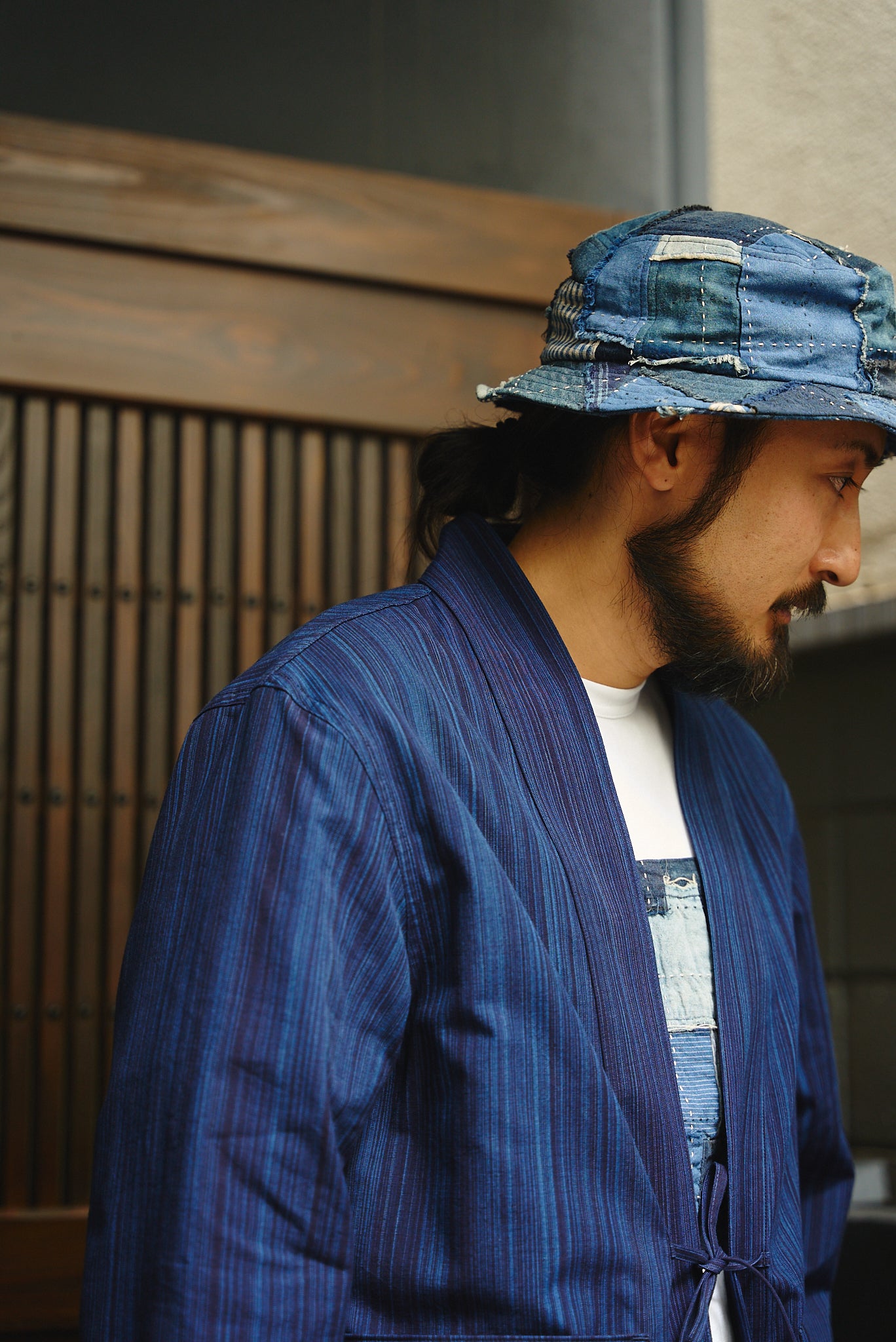
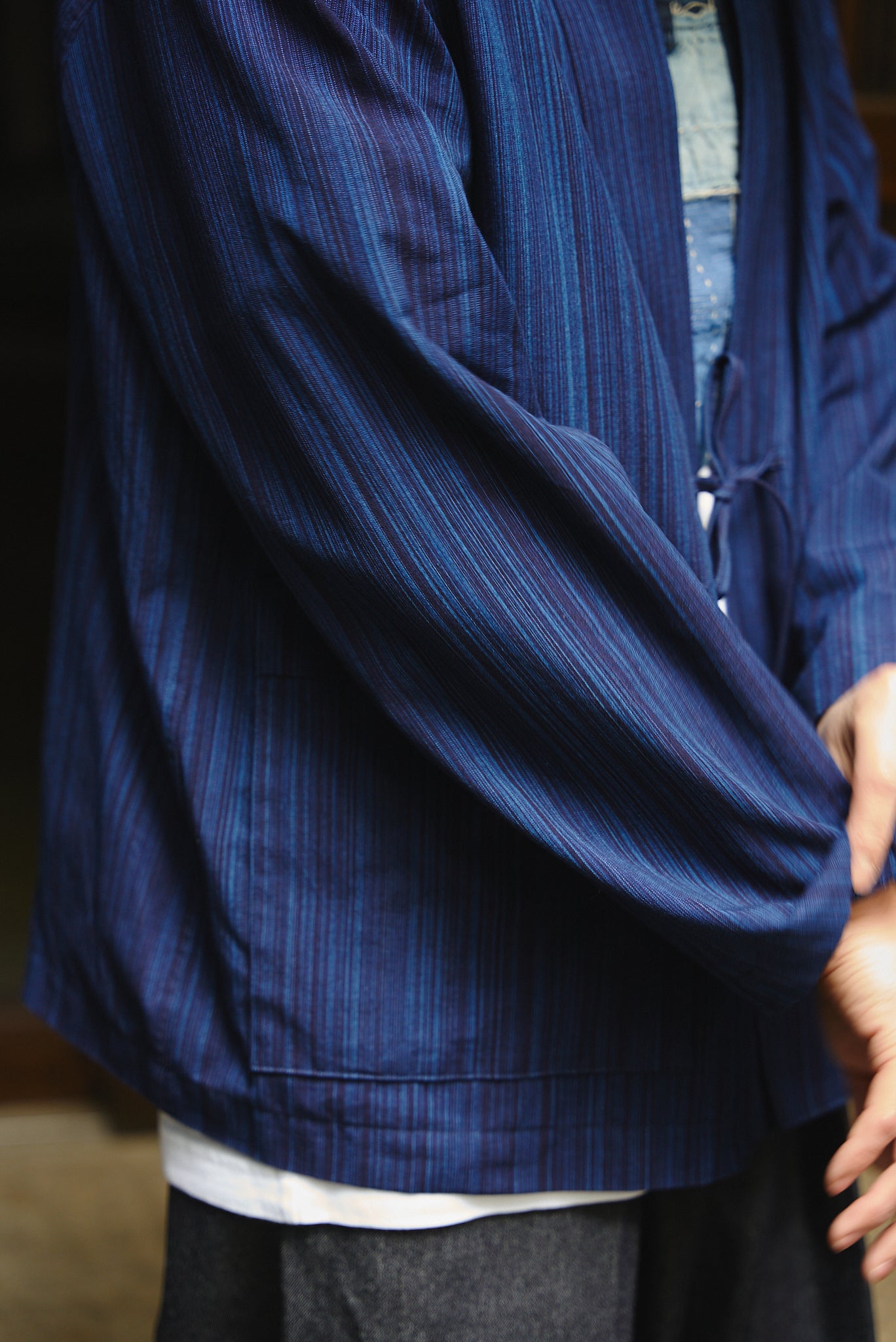
When you get closer, you can see countless lines drawn on the fabric. These line-like designs are all due to the shading of the indigo dye.
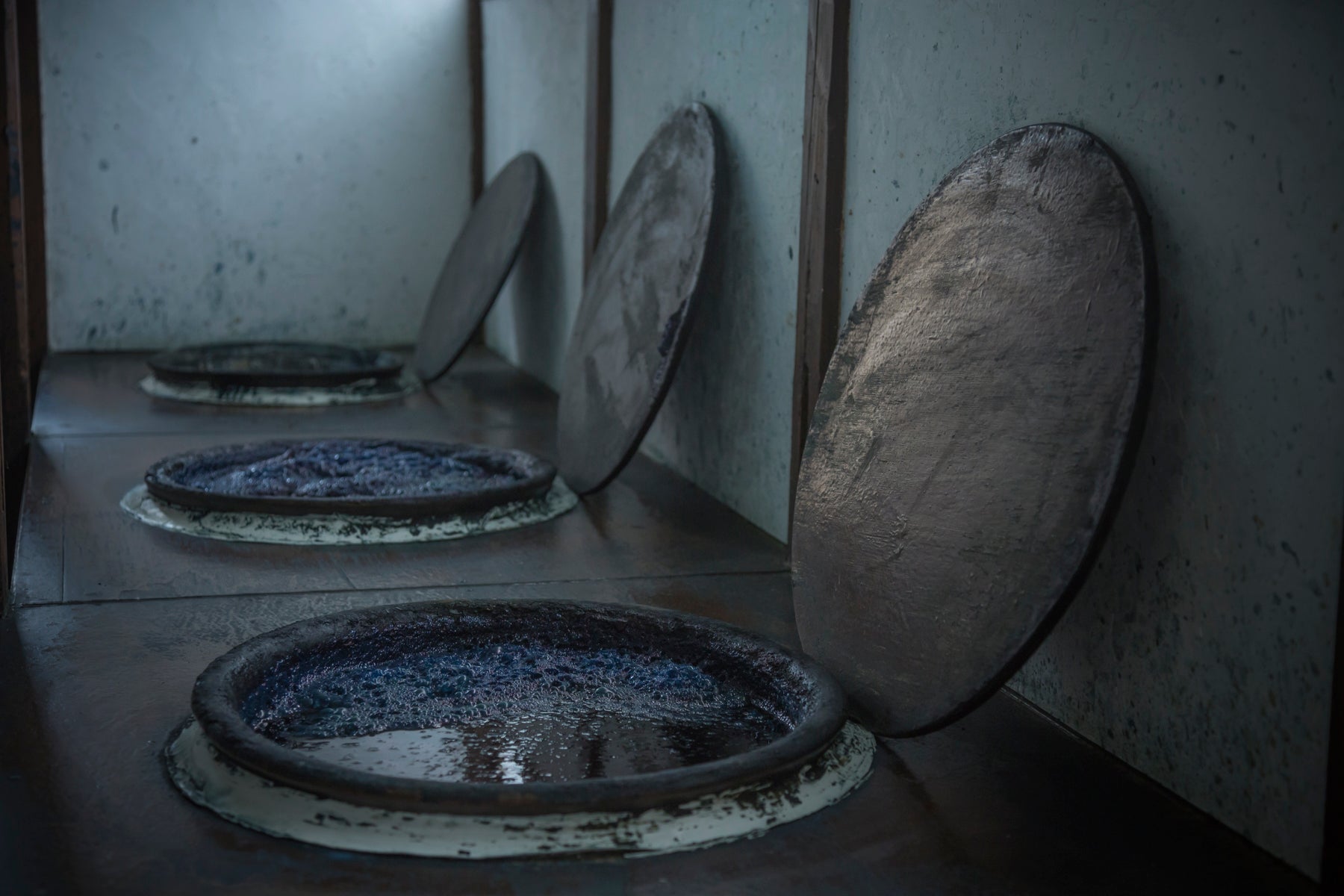
Indigo dyeing at the fabric or product stage does not produce such beautiful line-like shading, although the color is uneven. Only "Kasuri" weave can produce such line-like designs.
Kasuri (Kasuri-ori)
In kasuri weaving, the threads are dyed with indigo at the thread stage. The indigo-dyed threads are then woven into a fabric, and the shades of the indigo-dyed threads emerge like lines.
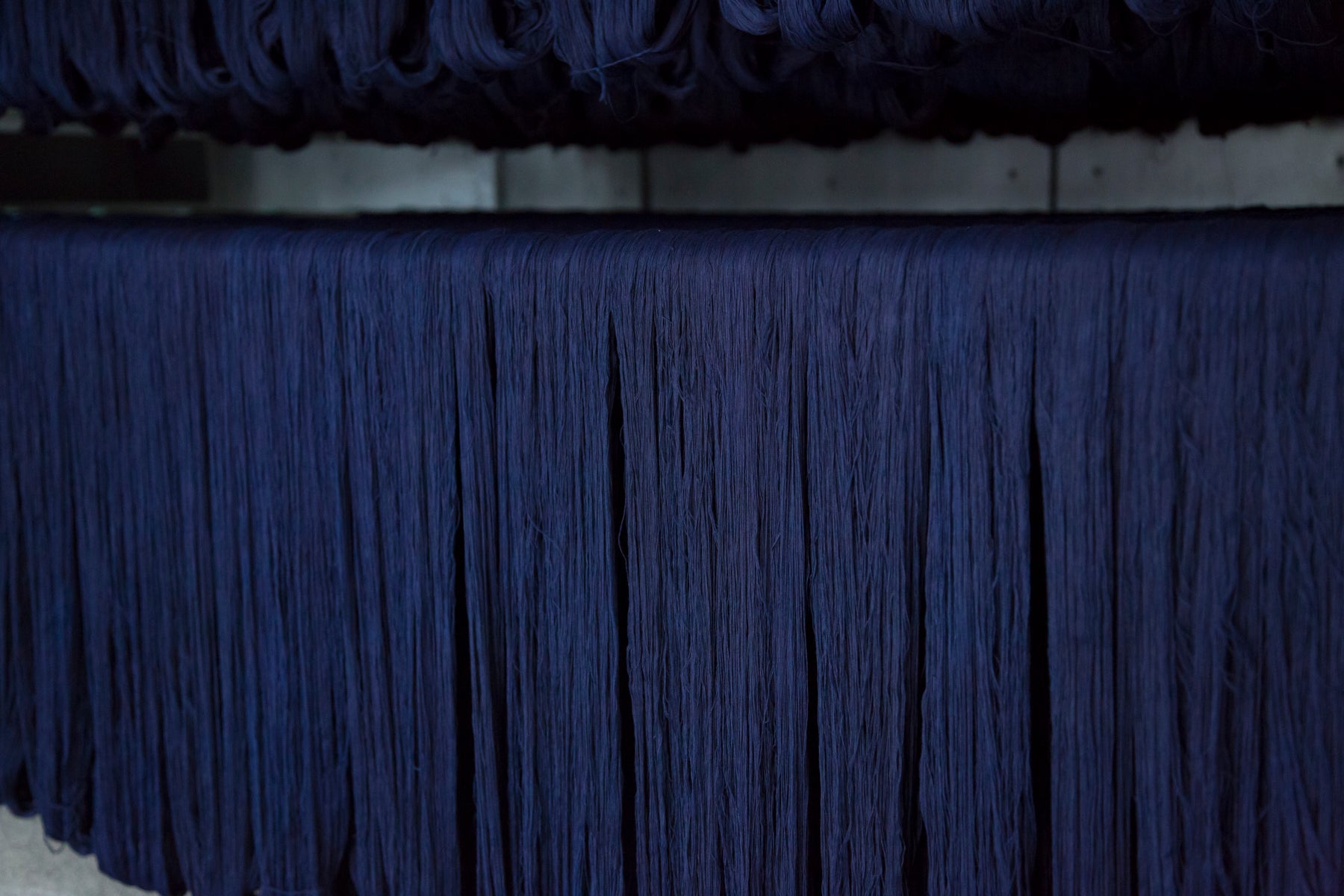
The pattern that emerges is determined by the placement of the threads, which requires experience. The secret behind the unusual atmosphere of KUON's Kasuri is the skill and time and effort put into it by the craftsmen.
Last but not least,
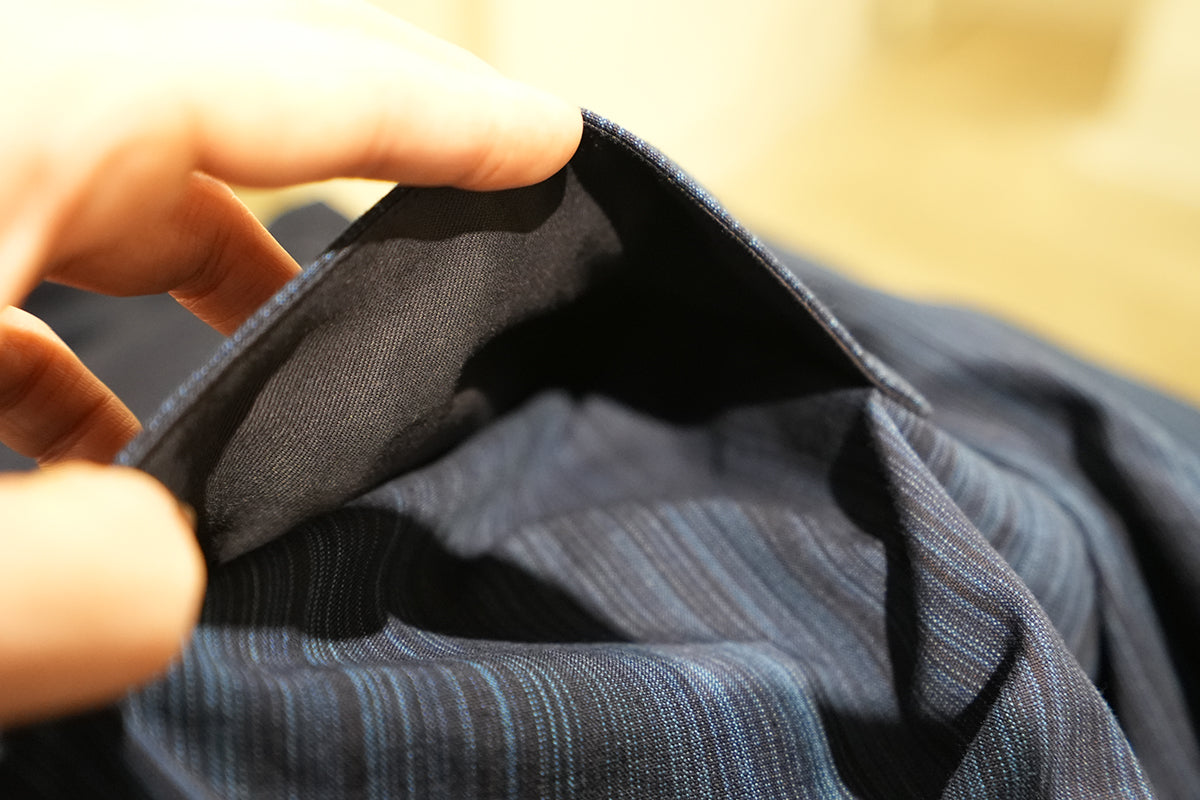
The large pockets are reinforced with a sleek. The designer's wish is that "you can wear it for a long time without tearing" and "you can put a lot of things in it without any problems. The designer's thoughtfulness has also been put into it.
Why don't you go to the festivals this summer wearing a cool indigo Noragi, a kinchaku and sandals?
Thank you!
Aizome Oxford Noragi

